<< Previous | Displaying results 4351-4375 of 6769 for "" | Next >>
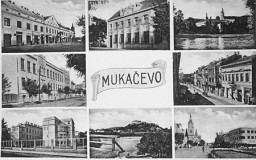
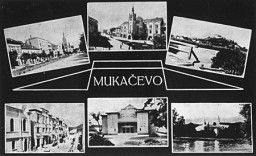

One page of a document belonging to Chief Prosecutor Benjamin Ferencz listing the defendants in the Einsatzgruppen Case along with their position and crimes, line of defense, counts against them, and sentence.
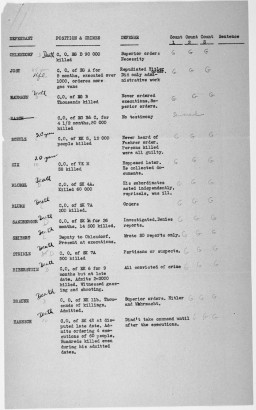
Special pass issued to rabbinical student Moshe Zupnik. Yeshiva students had to obtain special passes from Japanese authorities to leave the "designated area" in order to continue their studies at the Beth Aharon Synagogue, which was located outside the zone. [From the USHMM special exhibition Flight and Rescue.]
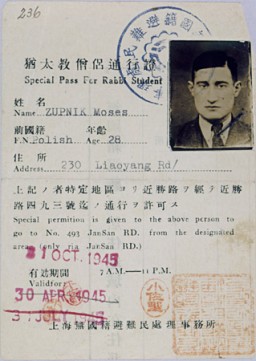
Special pass issued to rabbinical student Chaim Gorfinkel. Yeshiva students had to obtain special passes from Japanese authorities to leave the "designated area" in order to continue their studies at the Beth Aharon Synagogue, which was located outside the zone. [From the USHMM special exhibition Flight and Rescue.]
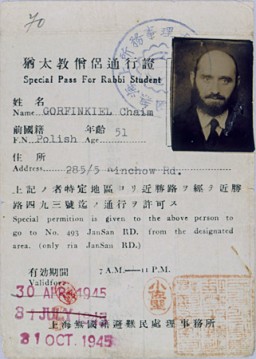
The SS compiled lists of Jews who were to be deported to ghettos, concentration camps, and killing centers. This document provides the names, birthdates, marital status, and addresses of Jews who were “evacuated” on November 20, 1941 from Germany to the Riga ghetto in German-occupied Latvia.
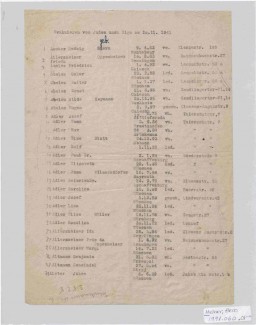
On December 17, 1941, the Romanian government issued a decree requiring a census of all those with "Jewish blood.” All persons having one or two Jewish parents or two Jewish grandparents were ordered to register at the Central Jewish Office. This is a census certificate issued by that office in 1942.
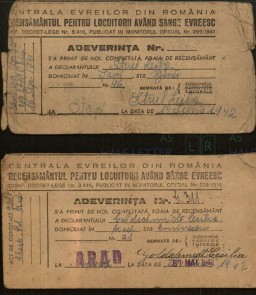
On December 17, 1941, the Romanian government issued a decree requiring a census of all those with “Jewish blood.” All persons having one or two Jewish parents or two Jewish grandparents were ordered to register at the Central Jewish Office. This is a census certificate issued by that office in 1942.
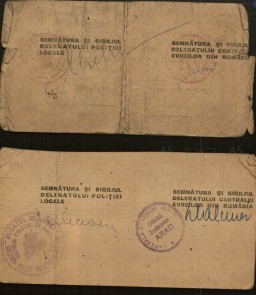
This German map indicates the number and distribution of Jews living in the Baltic countries as of 1935. It served as a reference for the SS mobile killing squad assigned to carry out the mass murder of the Jews there.
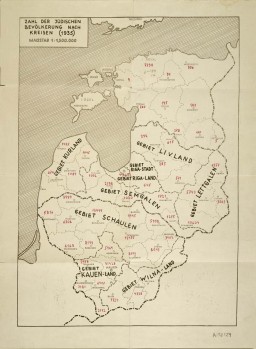
The Nazis made Jewish leaders responsible for the distribution of food supplies and other necessities allotted to ghetto residents. Due to grossly inadequate supplies, the Juedische Selbstverwaltung Theresienstadt (Jewish Administration of Theresienstadt) issued ration cards such as this one. The columns count points allotted for various goods identified by letters of the alphabet. Boxes were removed as residents exchanged points for food or other goods. This view shows the front of the card. Issued in the…
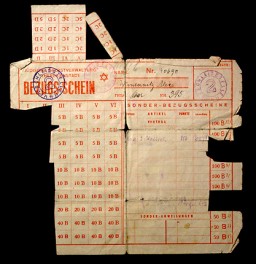
Magdalena Kusserow, incarcerated in a special barracks for Jehovah's Witnesses in the Ravensbrück concentration camp, used stationery provided to prisoners to write a letter to her sister Annemarie in April 1942. The handwritten numbers in the block in the upper right identify Magdalena as prisoner 9591, assigned to block 17a. Magdalena wrote to her sister in part (translated from German): "Dear Annemarie. Received your letter of March 15, did you get mine? I'm fine. How did it go with Wolfgang's 2nd…
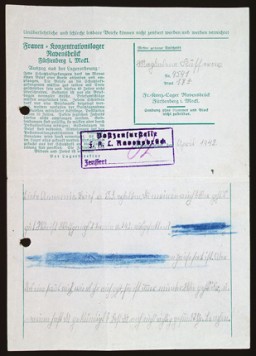
The Slovak National Council for Social Solicitude issued this registration certificate to Mikulas Diamant on July 25, 1945, in Bratislava, Czechoslovakia. This view shows the front and back cover. The certificate ensured repatriation and safe return home.
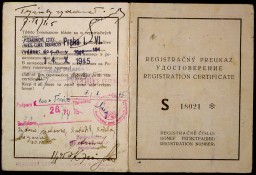
In July 1942, the German health department located in Krakow (Krakau), occupied Poland, issued this identity card to Max Diamant. This view shows the front and back covers of the card. The interior pages identify Diamant as a dental assistant in Przemysl, Poland, and show his signature and photograph mounted under the stamped word "Jew."
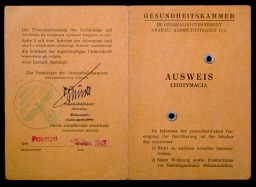
Max Diamant obtained this identity card from the German health department located in Krakow (Krakau), occupied Poland, in July 1942. This view shows the interior pages, which identify him as a Jew and detail his personal information, such as occupation (dental assistant), birthdate (June 23, 1915), birthplace (Vienna), and current address in Przemysl, Poland.
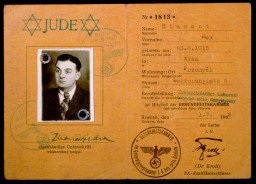
Dr. J. Rebhan, chair of the Jewish council in Przemysl, Poland, signed this document certifying that Max Diamant had stable employment in the Jewish clinic. The certificate identifies Diamant as a dentist and is dated June 4, 1942. During World War II, the Germans established Jewish councils to ensure that Nazi orders and regulations were implemented. Jewish council members also sought to provide basic community services for ghettoized Jewish populations.
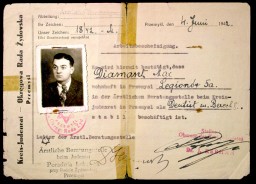
The German army occupied Krakow, Poland, in September 1939. In March 1941, the Germans ordered the establishment of a ghetto in Krakow. In this footage, Polish Jews are forced to move into the Krakow ghetto. They wear the required armbands, used to distinguish the Jewish population from the rest of the city's residents. By late 1941, there were some 18,000 Jews imprisoned in the Krakow ghetto.
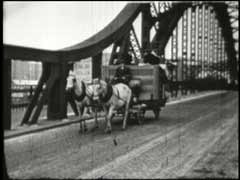
A bridge connected areas of the Warsaw ghetto to prevent Jews from entering the streets that were not part of the ghetto. Before the ghetto was sealed, the few entrances and exits had checkpoints. In the early months of the ghetto, life had the appearance of normalcy, but very soon the lack of food and adequate housing began to take its toll.
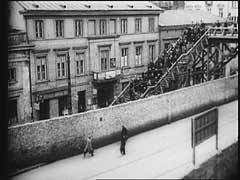
The German army occupied Lodz, Poland, in September 1939. From early February 1940, Jews in Lodz were forced to move to a designated ghetto area, which was sealed on April 30, 1940. This German footage illustrates conditions during winter in the Lodz ghetto. Winter in the ghettos aggravated existing hardships, depleting already sparse supplies of food and fuel.
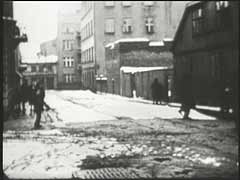
Germany invaded Poland on September 1, 1939, beginning World War II. Quickly overrunning Polish border defenses, German forces advanced towards Warsaw, the Polish capital city. This footage from German newsreels shows German forces in action during the invasion of Poland. Warsaw surrendered on September 28, 1939.
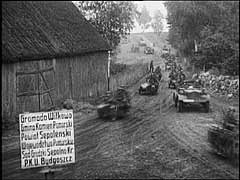
German troops reached parts of Warsaw on September 8 and 9, 1939. During the German siege of Warsaw, the city sustained heavy damage from air attacks and artillery shelling. Warsaw surrendered on September 28. Here, German troops occupy Warsaw. This footage comes from "Tale of a City," a film made by a Polish underground film unit.
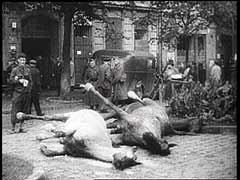
After the Germans established the Warsaw ghetto in October 1940, conditions deteriorated rapidly. The Germans strictly controlled the movement of goods into and out of the ghetto. There was not enough food to feed the ghetto residents. At great personal risk, many Jews attempted to smuggle in food. The German food ration for Warsaw ghetto inhabitants amounted to less than 10 percent of the ration for a German citizen. Thousands of Jew died in Warsaw each month because of starvation or disease.
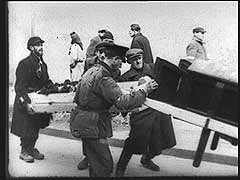
The Nazis sealed the Warsaw ghetto in mid-November 1940. German-induced overcrowding and food shortages led to an extremely high mortality rate in the ghetto. Almost 30 percent of the population of Warsaw was packed into 2.4 percent of the city's area. The Germans set a food ration for Jews at just 181 calories a day. By August 1941, more than 5,000 people a month succumbed to starvation and disease.
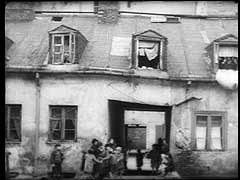
The Nazis sealed the Warsaw ghetto in mid-November 1940. German-induced overcrowding and food shortages led to an extremely high mortality rate in the ghetto. Almost 30 percent of the population of Warsaw was packed into 2.4 percent of the city's area. The Germans set a food ration for Jews at just 181 calories a day. By August 1941, more than 5,000 people a month succumbed to starvation and disease.
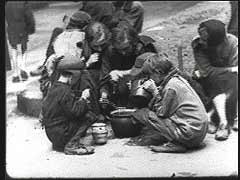
After the Germans established the Warsaw ghetto in 1940, the Jewish council in Warsaw became responsible for the full range of city services inside the ghetto area. In this German footage, prisoners from the ghetto's "Jewish prison" run into the courtyard and walk in circles during inspection.
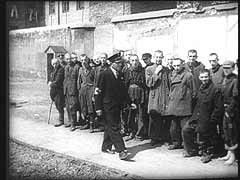
We would like to thank Crown Family Philanthropies, Abe and Ida Cooper Foundation, the Claims Conference, EVZ, and BMF for supporting the ongoing work to create content and resources for the Holocaust Encyclopedia. View the list of donor acknowledgement.